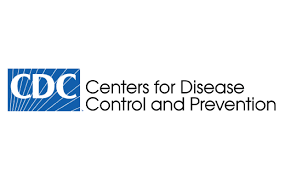Pfizer COVID-19 Vaccine Anaphylaxis Report Released by CDC
The federal agency announces that of nearly 2 million vaccinations, only 21 total cases of severe reactions took place.

This story, CDC Issues Report on Anaphylaxis Cases in Pfizer Vaccine Recipients, was originally published on HCPLive.
The US Centers of Disease Control and Prevention (CDC) has issued a new report on the prevalence of anaphylaxis following the first dose of the Pfizer-BioNTech coronavirus disease 2019 (COVID-19) vaccine.
Between December 14-23, the Vaccine Adverse Event Reporting System (VAERS) detected a total of 21 cases of anaphylaxis, a severe, life-threatening allergic reaction that rarely occurs after vaccination, following the administration of nearly 1.9 million first doses of the Pfizer vaccine.
The numbers equate to 11.1 cases per million doses, with 71% of the adverse reactions occurring within 15 minutes of vaccination. However, 17 of the 21 cases of anaphylaxis were in individuals with documented histories of allergies or allergic reactions, 7 of which had a history of anaphylaxis.
The median interval from vaccine administration to symptoms onset was 13 minutes (2-150 minutes).
In addition, the 20 individuals with available follow-up information had all recovered or been discharged home.
Reporting Adverse Reactions
The adverse reactions were reported through a number of channels, including direct outreach by health care providers and public health officials, as well as reports to VAERS, the national passive surveillance (spontaneous reporting) system for adverse events following immunization.
VAERS is jointly operated by the CDC and US Food and Drug Administration (FDA). Reports of an adverse event to VAERS are followed up with direct outreach, including telephoning contacts listed in the VAERS report to gather additional clinical details and collecting medical records.
The CDC suggestions facilities administering the vaccine should adhere to CDC guidance, including screening recipients for contraindications and precautions, having necessary supplies available to manage anaphylaxis, implementing the recommended postvaccination observation periods, and immediately treating suspected cases of anaphylaxis with intramuscular injections of epinephrine.
Thus far, there have been reports of 4393 (0.2%) adverse events submitted to the VAERS, 175 of which were identified for further review as possible cases of severe allergic reaction, including anaphylaxis. Of the remaining cases determined not to be anaphylaxis, 86 were identified as nonanaphylaxis allergic reactions and 61 were considered nonallergic nonallergic adverse events. There are also 7 cases currently under investigation.
Facts Behind the Pfizer Vaccine Authorization
On December 11, the FDA granted an Emergency Use Authorization for BNT162b2 for individuals aged 16 or older, representing the first COVID-19 vaccine in the US to get to that point.
The EUA was granted based on data from an ongoing, real-world, multinational phase 2/3 assessment of the mRNA vaccine versus placebo in the indicated age group. The data, shared by the FDA prior to the Vaccines and Related Biological Products Advisory Committee (VRBPAC) meeting for BNT162b2 on Thursday and submitted with the EUA application in November, showed a 95% overall vaccine efficacy among treated participants without previous SARS-CoV-2 infection prior to 7 days after their second dose of the vaccine.
At the time of their EUA submission, Pfizer had reported just 8 COVID-19 cases among the 18,198 eligible participants given the vaccine, versus 162 among those given placebo.
One week later the FDA also granted an EUA for mRNA-1273, a COVID-19 vaccine developed by Moderna. However, because the Moderna vaccine was approved later, it was not included in the current report on allergic reactions.
Report Limitations
The CDC did report various limitations in the report, including that the allergic reaction case reports were gathered through passive surveillance that is subject to reporting biases, including underreporting.
There is also the potential for bias caused by stimulating reporting related to increased public and health care provider awareness of potential safety concerns and possible data lags and incomplete reporting of vaccine doses administered might underestimate the total doses administrated relative to the adverse reactions.
Finally, the focus on the vaccine is a function of the timing of the product availability and doses administered.
The report, Allergic Reactions Including Anaphylaxis After Receipt of the First Dose of Pfizer-BioNTech COVID-19 Vaccine — United States, December 14–23, 2020,” was published online by the CDC.
